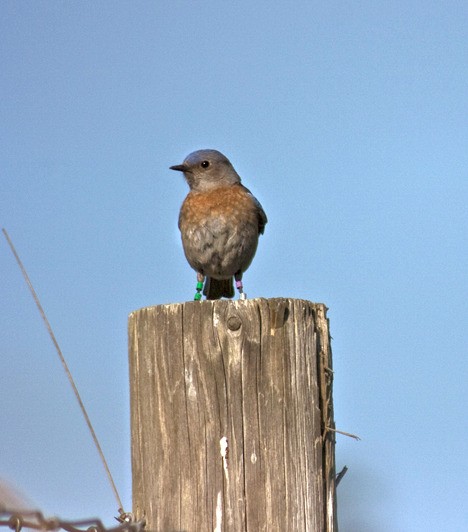It’s a familiar story: You’re born and raised on the island, you spend some time on the mainland, you meet your life partner, you return to the islands to raise a family.
A familiar story, even among birds.
Western bluebirds have returned to the San Juan Islands, the San Juan Preservation Trust reports. Many of them were banded as nestlings, which means they were born here. And they’ve returned with unbanded mates, according to Kathleen Foley, a bluebird project coordinator. That means bluebirds born elsewhere have migrated to the island.
Four dozen bluebirds hatched on the islands last year — that’s a good number, considering it was only in 2007 that the Preservation Trust brought bluebirds here from Fort Lewis to establish a population here.
“We don’t know how many of those four dozen survived the winter,” Foley said. You can help the Preservation Trust make a bluebird count by reporting sightings to 378-2461 or kathleenf@sjpt.org.
Foley said bluebirds were included in breeding reports on the islands in the 1920s, and the last sightings were reported in the 1960s. The local bluebird population was believed to have been extirpated until bluebirds were reintroduced here in 2007.
The bluebirds winter elsewhere — “We don’t know where they go,” Foley said — but return in late January/early February. Bluebirds lay eggs in their second year. Bluebirds have a lifespan of five or six years, Foley said.
Read more about the San Juan Islands Western Bluebird Reintroduction Project here



